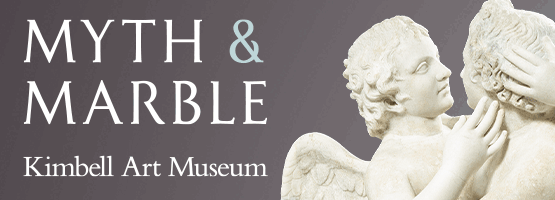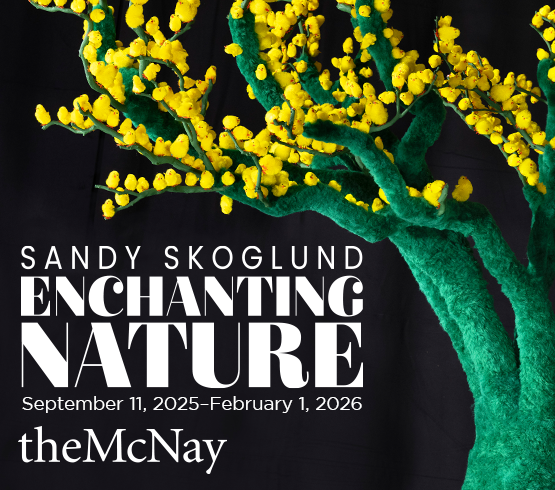Georgia O’Keeffe’s mother takes my hand and gently pulls me across the room to read me a fairytale. I’ve come to the Open Dance Project’s Houston-based studio to watch an early rehearsal of company artistic director and founder, Annie Arnoult’s latest creation Red Landscape: Georgia O’Keeffe in Texas 1912-1918, and the dancers have put me to work, the work of representing the audience that is.
For Red Landscape, Arnoult goes back to some of the eras and themes that have inspired her to create dance in the past: an artist, an artist creating about a century ago then throw in some Texas settings for good measure. Several of her past works like Bonnie & Clyde, All the Devils Are Here, Dada Gert and ’Bout a Stranger are set sometime in the first three decades of the 20th century. During our talk after the dancers had returned to the 21st century and gone home, Arnoult agreed that this early 20th century period resonated deeply for her.
“I think some of it is just because that’s when Modernism is really starting to be generative and integrate into the popular awareness. It’s forming the culture that we’re in now.”
O’Keeffe came to the city of Canyon, Texas to take a teaching position at West Texas State Normal College, which would later become part of the Texas A&M system. Small town life in the rocky wilderness of the Texas panhandle changed her life and her art significantly. The good folks of 1916 Canyon didn’t really know what to think of her as she drove fast and went through a few romantic relationships.
During these years, she also suffers from debilitating migraines contracts the 1918 “Spanish” Flu, meets and corresponds with the man who will eventually become her husband, Alfred Stieglitz, and her brother Alexis is exposed to mustard gas in WWI. All the while she’s discovering who she wants to be as an artist, moving from black and white, harmonious charcoal drawings to vivid paintings, “saturated” with color.

1 ⁄4
Madelyn Manlove in Open Dance Project’s Red Landscape: Georgia O’Keeffe in Texas directed by Annie Arnoult. Photo by Lynn Lane.

2⁄4
Brenden Winkfield, Cameo Reneé, Madelyn Manlove, Jaime Garcia Vergara in Open Dance Project’s Red Landscape: Georgia O’Keeffe in Texas, directed by Annie Arnoult. Photo by Lynn Lane.

3 ⁄4
Cameo Reneé and Jaime Garcia Vergara in Open Dance Project’s Red Landscape: Georgia O’Keeffe in Texas, directed by Annie Arnoult. Photo by Lynn Lane.

4 ⁄4
Cameo Reneé, Jaime Garcia Vergara, Madelyn Manlove, and Brenden Winkfield in Open Dance Project’s Red Landscape: Georgia O’Keeffe in Texas, directed by Annie Arnoult. Photo by Lynn Lane.
Collaborating with composer Garreth Broesche and scenic designer Ryan McGettigan and of course the ODP dancers, Arnoult wants Red Landscapes to depict O’Keeffe’s inner and life conflicts through dance. She believes dance is an ideal medium to do so because O’Keeffe’s own art discoveries seemed to be visceral and physical.
“You cannot escape this body,” Arnoult says of O’Keeffe’s burgeoning ideas during the period. “It feels very much like a journey towards blood red. She talks about the red in her paintings in very direct connection with the soldiers and her brother, Alexis.”
The production will focus on this pivotal time, but it will expand the dance depicting the early life and influences O’Keeffe carried with her into Texas and how those years molded her into the O’Keeffe we now know from all those museum exhibitions. The dancers will play important people in her life, but they’ll also play O’Keeffe at different ages. Arnoult has cast herself as an older O’Keeffe who welcomes audiences into the world of the show.
“I don’t think audiences will ever know that. There’s no reason for them to need to know where the material came from, but for us it gives us the opportunity to sort of live in her world, to live in this Modernist, Abstract world and then use it and change it and manipulate it,” describes Arnoult.
When I asked what they were discovering as they worked, Arnoult again discussed the body and the connection she found between the way she uses dance to confront, explore and wrestle with the problems and struggles in our time and O’Keeffe’s use of her own art to process her thoughts and conflicts. She says by reading O’Keeffe’s letters, it becomes apparent that she begins rejecting absolutes, and instead questions and wants to have conversations.
As Arnoult tried to articulate her discoveries about themselves as artists and O’Keeffe’s own artistic evolution, she clutches her own arm with her hand and then repeats some of the gestures I had just seen during their rehearsal.
“There is something about the attentiveness of touch that feels very important in our discovering and honoring the humanity of a person— the organic, tacitness of each other in the space. I think there’s a project that’s happening for her during this time, which is a claiming of the organic, a claiming of humanity, a claiming of the red clay of Palo Duro Canyon.”
Having dug deep into the research and read O’Keeffe’s own words and then immersed herself in trying to tell that story through dance, Arnoult draws a bodily connection between O’Keeffe’s art and process and that impermanent creation that will happen within each Red Landscape performance.
“Us making theoretical art about it is not interesting. What we have to share with an audience in an immersive space is our real bodies and our real touch and our real twisting and contorting of those bodies and our real caring for those bodies.”
—TARRA GAINES





